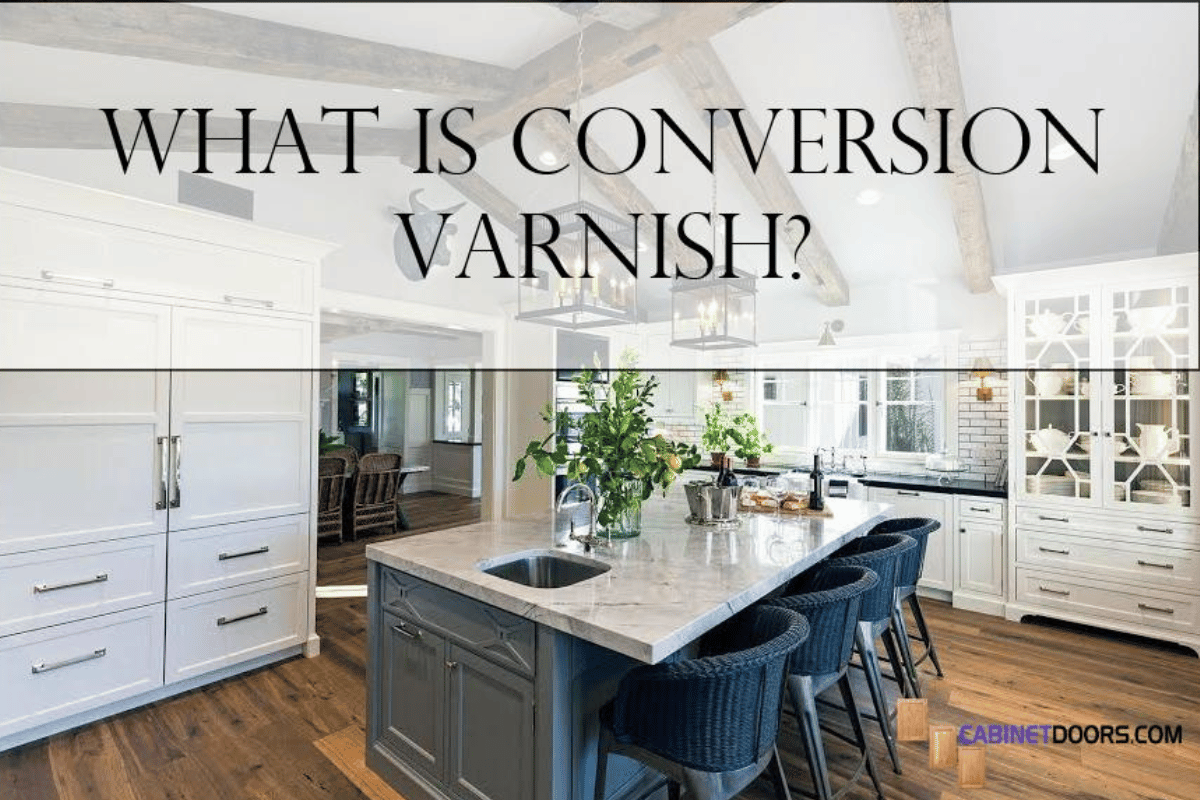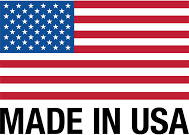What Is Conversion Varnish?
Posted by Jim Hill on Mar 21st 2023

If you’re looking to finish your cabinet doors, you’ve probably heard of conversion varnish, but you might not know what makes it different from regular paint. It can be helpful to understand why someone might choose conversion varnish vs. paint so that you can make the best decision for your home when replacing your cabinet doors.
Conversion varnish is one of the best finishes that can be applied to wood, but conversion varnish application does require a professional. Read on to learn more about all the benefits of using a highly durable and visually stunning varnish wood finish for your cabinet doors.
What Is Conversion Varnish?
Conversion varnish, also called catalyzed conversion varnish or catalyzed varnish, is a lacquer that consists of a high-end solid two-part post-catalyzed application process. In short, a hardening agent is added to the varnish prior to painting, which provides additional durability when combined with the heat-curing process. Conversion varnish is chemically cured and fast-drying and consists of 40-60% solids.
However, it must be applied by a professional to ensure the correct ratio of chemicals and solids is used so that it hardens correctly. A varnish wood finish does cost more than house lacquer, but it is also much more durable and easier to clean. It is this characteristic that makes it an excellent option for painted cabinet doors.
Conversion Varnish vs. Lacquer and Other Finishes
When choosing a finish for your cabinet doors, you want to explore all your options and choose a finish that will last. It helps to see how a varnish wood finish compares to other options. There are a few things to consider before deciding on the best clear coat for your cabinets.
Lacquer vs. Varnish
Lacquer is commonly used on cabinets and cabinet doors, and for a long time, it was thought of as the best wood finish. Lacquer uses a pre-catalyzed nitrocellulose finish that can be sprayed on and air-finished. It consists of about 12-18% solids, which means that many applications are required to get a proper build and density.
Lacquer does have some benefits when compared with other finishes—it is fast drying, which helps ensure a cleaner finish, and cures quickly via evaporation, which makes repairs relatively easy. It’s also fairly low cost and tolerates a variety of different climates quite well.
However, lacquer has a high VOC content, making it harmful to the environment and to your health. It has limited scratch resistance, and the low solid content means its film-building properties are poor. When comparing lacquer vs. varnish, lacquer just isn’t as durable.
Lacquer is significantly less resistant to heat, solvents, acids, and alkalis than conversion varnish paint and doesn’t protect the wood as well. Lacquer can also have a yellow tint, which can worsen over time. Ultimately, if you’re looking for a finish that can handle constant use and repeated cleaning, varnish is a better option.
Conversion Varnish vs. Polyurethane
Polyurethane is often considered one of the most durable finishes, so many people weigh conversion varnish vs. polyurethane when replacing cabinet doors. Polyurethane can have many benefits, particularly when compared to many other finishes. Polyurethane is actually a form of varnish and is quite durable. Polyurethane can resist scratching, heat, alkali, and acids and wear better than many other finishes, including lacquer. It also offers an attractive, protective finish.
However, on the downside, polyurethane can yellow over time, especially if in direct sunlight. It also requires sanding in between each coat to ensure proper bonding, and since the dry time is up to 24 hours, it takes quite some time to fully finish a piece. It is also typically brushed on rather than sprayed on, slowing the application even more.
Conversion varnish is typically more costly than polyurethane because it needs to be professionally applied. However, it also lasts much longer and is still consistently more durable. While a varnish wood finish might cost a little more, it is ultimately a better value, offering longer-lasting protection and durability.
Conversion Varnish Advantages
A varnish wood finish is a premium option for all sorts of projects, including cabinetry and cabinet doors. This post-catalyzed conversion varnish offers a number of benefits, especially compared to other cabinet paint or lacquer products. Let’s take a closer look at the advantages offered by conversion varnish to better understand why it’s such a smart choice.
Better Durability
When compared to basic home lacquer paint, conversion varnish wins in durability. It is largely a solid coating hardened during the application process but still elastic enough to move with the wood, so it stands up better to regular use. It doesn’t have a tacky feeling like some regular house paints and instead offers a smooth, hard finish that’s better for high-traffic and high-use areas.
Altogether, a varnish wood finish is resistant to heat, humidity, and scratches as long as it’s properly applied and cared for, protecting the wood and your kitchen’s appearance.
Clear Coat Finish
When conversion varnish is applied, you’ll get a smooth, clear color and finish. This highly polished finish creates a refined appearance in your kitchen or bathroom but also makes it easier to care for. In addition to looking great, the ultra-smooth and durable surface is easy to quickly clean or wipe down.
Whether your cabinets are subjected to use in a hot, humid kitchen while cooking frequent big meals, or you have small children whose messy little hands leave sticky fingerprints, conversion varnish paint can stand up to it all. Even better, you get all of the benefits with fewer coats that dry faster than other finish options.
Easy To Clean
When it comes to conversion varnish vs. paint, there’s no contest when it’s time to clean up. Conversion varnish simply applies smoother and doesn’t have a tacky or sticky feel like many kinds of house paints. If some food or other mess gets on your cabinet doors, they’re much easier to clean than traditional cabinet and house paint. Better still, the coating is more durable than other lacquers and paints, too, so it will look great after years of gentle cleaning. Remember not to use harsh chemicals.
Conversion Varnish Disadvantages
Problems with conversion varnish are always a result of improper application. For catalyzed conversion varnish to come out correctly, it requires particular conditions. If it is not applied properly, conversion varnish problems can include:
- Color shifting due to the acid catalyst
- Cracked finish if more than three coats are applied
- Incorrect hardening if the shop temperature isn’t kept in the upper 60s for two days after application
Because of its particular requirements, catalyzed conversion varnish requires a skilled professional to spray on the finish correctly and get the right results. After it’s applied, it must be cured in a properly temperature-controlled environment. Ensure that you don’t experience any conversion varnish problems, and get your cabinet doors professionally finished by a company you trust.
Shop For Painted Cabinet Doors at CabinetDoors.com
When you want the best clear coat for your cabinets or the longest-lasting finish for your painted cabinet doors, conversion varnish delivers. If you’re in the market for new cabinet doors that can stand up to daily use and you want a nice, smooth finish, we can help! Cabinetdoors.com exclusively uses the most skilled craftsmen to apply Sherwin-Williams conversion varnish to our painted cabinet doors.
We offer a variety of Sherwin-Williams paint colors to match your home’s style, made with the ideal Sherwin-Williams conversion varnish mixing ratio so that you receive a professional finish. Then, we build your doors to your exact specifications, so they’re the exact size, wood species, and design you want. Discover the difference high-quality, conversion varnish doors can make in your home. Explore your cabinet door options on our website, or contact us with any questions.

